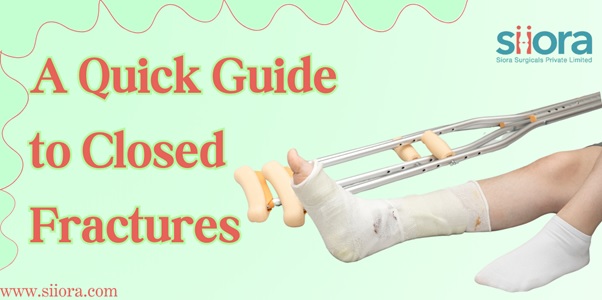


A closed fracture is a common injury where a bone breaks without piercing the skin. While less dramatic than an open fracture (where the bone protrudes through the skin), closed fractures still require attention to heal properly and avoid complications. Surgery is only required in severe cases to stabilize the fracture using a variable angle plate or other implants depending on the fracture.
So, how do closed fractures happen, and what should you do if you suspect one? Let’s delve deeper into this bone-related problem.
Our bones are surprisingly resilient, but they can succumb to pressure under certain circumstances. Common causes of closed fractures include:
From clumsy tumbles to high-impact falls, a sudden jolt can cause a bone to break, especially in the wrists, ankles, arms, and legs.
A forceful hit, like a kick or a collision during sports, can fracture a bone directly at the impact site.
Awkward twists, like landing wrong during a jump, can put enough torque on a bone to cause a break.
Repetitive stress on a bone, particularly in athletes, can lead to stress fractures, tiny cracks that develop over time.
Conditions like osteoporosis, which thins bones, can make them more susceptible to fractures even with minimal force.
While the absence of a visible break is a key feature, closed fractures often announce themselves with a variety of symptoms:
Throbbing or sharp pain at the injury site is a telltale sign. The pain may worsen with movement or applying pressure.
The body’s inflammatory response can cause swelling and discoloration around the fracture site.
In some cases, the broken bone might cause a visible deformity in the affected limb. This is more common with displaced fractures where the bone fragments shift out of alignment.
The pain and potential deformity can significantly limit your ability to move the affected limb normally.
If you suspect a closed fracture, seeking medical attention promptly is crucial. Here’s what to expect:
Treatment for closed fractures depends on the severity of the break and the affected bone. Common approaches include:
By following these guidelines and exercising patience, you can expect to make a full recovery from your closed fracture. Remember, early diagnosis and proper treatment are key to ensuring a smooth healing process and preventing long-term complications.
Learn more about the advancements in the orthopedic industry at the BOA Annual Congress in UK.
